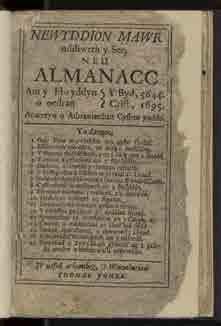
5 minute read
Community News
Why do people choose the Abbeyfield Colwyn Bay Society?

Advertisement
Residents come from all over to settle in North Wales. Take Jenny, who had her own interior design company in South Africa, visited North Wales to stay with a friend and decided she loved North Wales. She decided to move to Abbeyfield after realising she
needed more support and has been there since 2016. Jenny enjoys painting and keeping in touch with her friends and family all over the world. Meanwhile Pam, a keen Bridge enthusiast, moved to Glan Conwy from Cheshire after a very successful career as a physiotherapist, and subsequently decided on Abbeyfield as she
could remain independent and still enjoy Bridge while taking advantage of not having to cook and clean. Pam has been with Abbeyfield since 2019. Abbeyfield also has people local to the area,
such as Myfanwy who had a long career as a teacher in North Wales and, at 90 years old, still walks daily to Rhos promenade. Gwladys, a local to Rhos-on-Sea, can see the house she was born in from her lounge window. She has a large extended family close by but decided to move into Abbeyfield in 2016 to stop her family
worrying about her being lonely, despite their many visits. Oliver was a hospital doctor and has enjoyed a long retirement but his family decided after the loneliness of the pandemic he needed company and good food. If you are looking help a family member to move, Abbeyfield has a guest room at Alexandra Road where
people can come and experience communal living before deciding on their future.
www.abbeyfield.com

Safety number one priority at North Wales law firm
Staff at a North Wales law firm have reassured
clients that safety remains the number one priority as they continue to provide legal support throughout the Coronavirus pandemic. Edward Nutting (pictured), of Lanyon Bowdler Solicitors in Conwy, said that although lawyers were currently working from home whenever possible, they were easily accessible to speak to clients. “The advice in Wales has been for people to work from home for some time now, so we are well used to working remotely,” he said. “But I want to be clear to clients old and new that our offices are still open to receive documents,
and our lawyers are very much available. We are trying to continue the practice of meeting clients by video call, or of course a good old-fashioned telephone call, but we are still happy to meet face-toface if that is the preferred option. Anyone visiting our offices in Conwy can be assured that safety is
the top priority, and all necessary precautions will be taken.”
www.lblaw.co.uk
Calendars, diaries and almanacs
Have you had your new calendar yet, or opened the pages of a new diary? In the past, at the start of a new year, the old printed almanac would be removed from a string on the side of the mantelpiece, replacing it with a clean new one. The almanac predicted the minor events of the coming months, and also included fair dates, a calendar, some poems, and some advertisements. It was also where older people would record the main events of the farm, often in fairly garbled handwriting. Between the publication of the first in 1680, and the

last in 1953, many printers published several sets of Welsh almanacs, hundreds of which are in the National Library’s collections. The pioneer was Thomas Jones ‘the Almanacer’ (1648-1713). A native of Tre’r-ddol, near Corwen, Jones moved to London as a youngster, turning his back on the craft of tailoring, and started printing instead. By license in 1679, he obtained an official monopoly on printing
Welsh almanacs, and the following year he published his first
almanac, beginning a popular annual series that lasted until the year of his death. After moving to Shrewsbury, Thomas Jones made an invaluable contribution to the literature of Wales by publishing books, but it was as a publisher and printer of the annual almanac that he gained the affection of the ordinary folk, and reached a wide audience. People looked forward to reading his vague prophecies, details of his own sweaty diseases, as well as his sardonic criticism of contemporary society. Today, we will buy printed calendars or diaries in shops or use them on our computers. But, when turning the leaves of the old almanacs during the Christmas season, one can’t help thinking of the generations of homeless vagrants who travelled from door-to-door, and from area-to-area in Wales, to sell these little booklets in the past. They earned a few pennies for their labour, a little bit of profit in the harshness of winter. To learn more about the Almanacs the collection at the

Library, visit: https://www.library.wales/discover/digital-gallery/printed-material/the-welsh-almanac-collection
Maredudd ap Huw (Curator of Manuscripts)

North Wales entrepreneur unveils new leg cover
The founder of North Wales’ Limb-art has unveiled a world first – a “I’m
A Celebrity Get Me Out of Here!” prosthetic leg cover. Former Paralympic swimmer and medalist Mark Williams, who lost his leg in a cycling accident at the age of ten, has designed the eye-catching leg cover. It depicts the famous Gwrych Castle and contestants from this year’s show. “As the hit show is being filmed right on our doorstep we wanted to
show our support by making the world’s only ‘I’m A Celebrity Get Me Out Of Here!’ prosthetic leg cover,” explained Mark. “I set up Limb-art, which designs and manufactures prosthetic leg covers, to help other people who have lost a leg. As well as giving prosthetic legs a better shape, our eye-catching leg covers allow the wearer to express their personality and gives them confidence. They are also a great talking point. I’ve lost
count of the number of times I’ve been stopped in the street and been told my leg looks amazing.” Limb-art has won numerous awards for its prosthetic leg covers. Last month Mark was named as ‘Entrepreneur for good’ winner at the Great British Entrepreneur Awards.
www.limb-art.com











